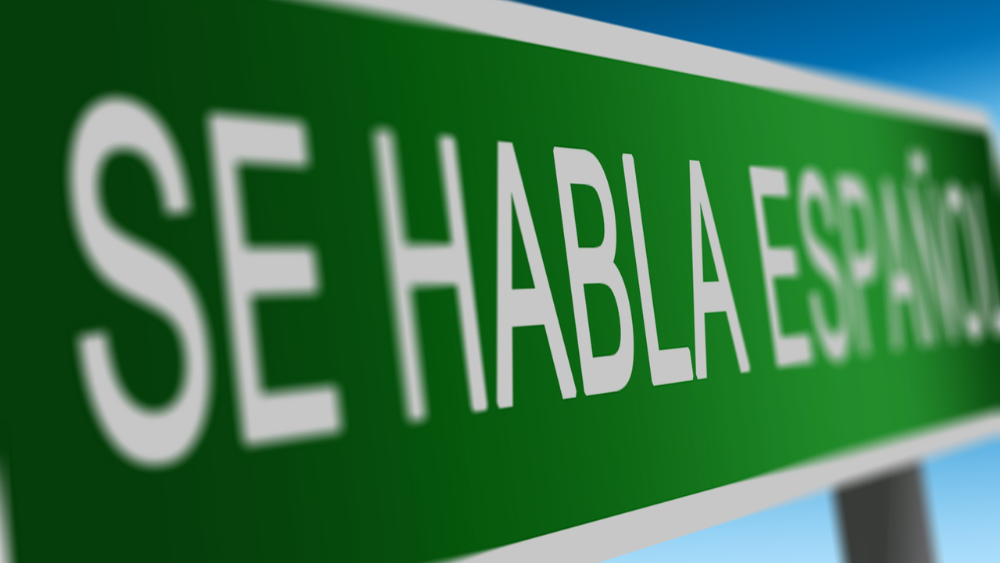
Since 2010, April 23rd has been observed as UN Spanish Language Day – El Día del Idioma Español de las Naciones Unidas – which aims to “to celebrate multilingualism and cultural diversity as well as to promote equal use of all six of its official working languages throughout the organization”. It acknowledges that Spanish is an official or de facto national language of several languages in the Americas, especially Hispanic America.
The 1978 Spanish Constitution defines Spanish (“Castilian”) as the official language of the whole of Spain. The term “Castilian” – castellano in Spanish – is related in the Kingdom of Castile where the language developed, whilst español derives from the Occitan word ‘espaignol‘ which itself derives from the Latin word ‘hispaniolus’ which means “of Hispania”, the Roman name for the Iberian Peninsula.
Spanish is part of the Ibero-Romance language group that developed on the Iberian Peninsula from Latin and around 75% of modern Spanish is derived from the classical language. The first written use of the language was made in Toledo in the 13th century, then a city in the Kingdom of Castile, and colonialism during the early modern period (16th-19th centuries) spread the language overseas, most notably to the Americas.
The 15th century book Gramática de la Lengua Castellana written by Antonio de Nebrija was the first work dedicated to the Spanish language and the first grammar of a modern European language to be published. Completed in 1492, it was the first book to focus on the study of the rules of a Western European language besides Latin. Miguel de Cervantes, who wrote Don Quixote in the early 17th century and which has subsequently become one of the best-selling novels of all time, is so well-known across the world that the Spanish language is often known as La Lengua de Cervantes.
There are about 500 million native speakers of Spanish and it is the official language in 20 countries including Spain, Mexico, Colombia, Argentina, Peru, Venezuela, Chile, Guatemala, Ecuador, Bolivia, Cuba, and Uruguay. It is the second-most spoken native language in the world after Mandarin Chinese and the fourth-most spoken language overall in the world after English, Mandarin Chinese and Hindustani.
It has become one of the most taught foreign languages in the world along with English and French and is now one of the most-used languages on the internet (according to the number of users) after English and Chinese, and the second-most used language (according to the number of websites) after English.
Spanish is an official language of the United Nations and the European Union as well as a number of other international organizations, particularly based in the Americas.
Basic Spanish
- Hola (Hello)
- ¡Buenos días! (Good morning!)
- ¡Buenas tardes! (Good afternoon!)
- ¡Buenas noches! (Good evening! / Good night!)
- ¿Cómo estás? (How are you?)
- ¿Qué tal? (What’s up?)
- ¿Qué haces? (What are you doing?)
- ¿Qué pasa? (What’s happening?)
- ¡De nada! (You’re welcome!)
- Adios (Goodbye)
- Hasta luego (See you later)
- Hasta mañana (See you tomorrow)
- ¡Hasta pronto! (See you soon!)
- Gracias (Thank you)
- ¡Muchas gracias! (Thank you very much!)
- Por Favor (Please)
- Si (Yes)
- Claro (Of Course)
- No (No)
- ¡Perdon! (Excuse me!)
- ¡Disculpe! (Excuse me! – to apologise in advance for something)
- ¡Lo siento! (Excuse me! – to apologise for a mistake)
- ¿Cómo te llamas? (What’s your name?)
- Me llamo … (My name is …)
- ¿Qué hora tienes? (What time is it?)
- ¿De dónde viene? (Where are you from?)
- (Yo) soy de … (I’m from …)
- ¿Dónde vives? (Where do you live?)
- Vivo en … (I live in …)
- ¿Cuántos años tienes? (How old are you?)
- (Yo) tengo … años. (I’m … years old.)
- ¿Puede ayudarme? (Can you help me?)
- ¿Podría ayudarle? (Can I help you?)
- ¿Cuánto cuesta eso? (How much does it cost?)
- ¿Puedes hablar más despacio? (Can you speak more slowly?)
- ¿Entiende? (Do you understand?)
